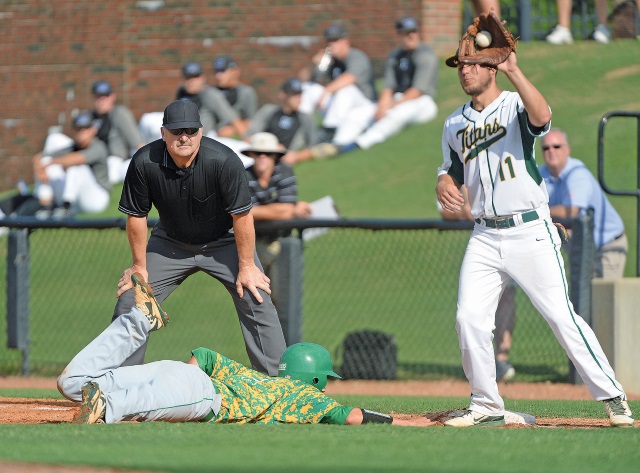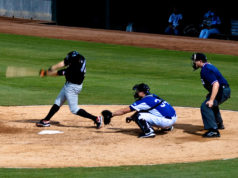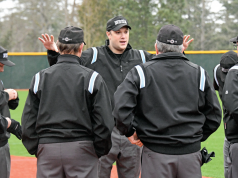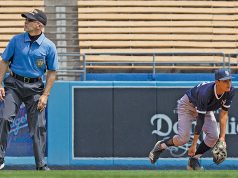You can’t teach an old dog new tricks, and apparently you can’t get umpires — old, new or in between — to clean up their mechanics.
I worked with roughly a dozen different partners last season and the one consistent thing that shone through was their general inconsistency in mechanics. Be it signaling, positioning, rotation or the little nuances that are supposed to be done a certain way, some of my compadres fell short. Some by a lot.
For instance, there is the guy who screams “Foul ball” at the top of his lungs when the ball is hit back to or over the screen. Like everyone in the ballpark didn’t figure that out? OK, you might accuse me of picking gnat waste out of pepper on that one. Except that the guy does it from the bases. To me, that’s overkilling overkill.
Then there is the guy who complains his games are running too long. But he goes all the way back to the screen on every foul ball hit out of the playing area, waiting for it to hit the ground before walking back to the plate and giving the catcher a fresh ball.
Another favorite is the guy who only sporadically declares the ball live. So the pitcher is back on the rubber and the batter is in the box. Then the pitcher snaps a pickoff throw that catches the runner napping, I’m in a quandary. Did my partner forget to say “Play” or was he truly not ready for the ball to be live again?
I get the feeling I’m going to catch hell either way. I’m right. I confine myself to umpiring baseball. But I worked with a number of partners who also work softball. I can tell after a while without asking if my crewmate doubles up on sports. The most telling is when they dust off the rubber between innings. Again, does it hurt the overall product? Is anyone placed at a disadvantage by that little housekeeping? No. But it makes you wonder what other non-baseball mechanics are rattling around in the guy’s head.
Other umpires try to be helpful to players in other ways. Like going to the mound after the relief pitcher has warmed up to tell him there is no count on the batter, there are no outs and the bases are loaded. What next? Do we tell the batter there’s a new pitcher and he throws a fastball, slider and 12-to-6 curve?
Finally there is the partner who insists we don’t need to do all that preplay signaling, like infield fly, home-to-third rotation, time play, etc. But then the runner from first lights out for third on a hit. You dutifully observe the batter-runner touch first and get ready for his possible advance to second when you realize your partner is still at home plate, taking it all in as if it’s the Saturday matinee at the Bijou. Now the throw comes to third and no one is there to call that whacker. There’s no guarantee your partner would have rotated properly had you shared the reminder signal, but you’d have had a better chance.
OK I’ll come off the soapbox now. Until the season, when I will likely see some of those same characters again and the old dogs will be a year older.
What's Your Call? Leave a Comment:
Note: This article is archival in nature. Rules, interpretations, mechanics, philosophies and other information may or may not be correct for the current year.
This article is the copyright of ©Referee Enterprises, Inc., and may not be republished in whole or in part online, in print or in any capacity without expressed written permission from Referee. The article is made available for educational use by individuals.


















